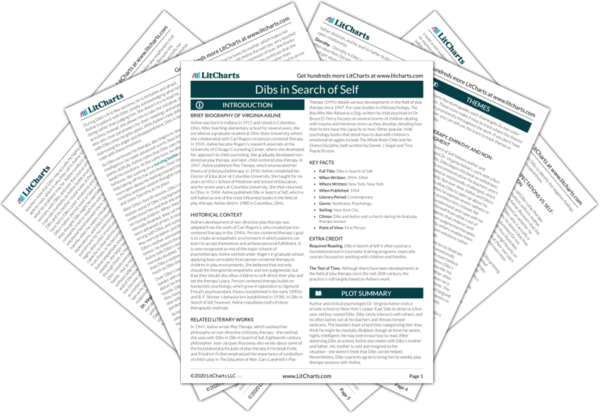Here Axline affirms that Dibs’s emotional intelligence, social skills, and intellect are now more balanced. Because he views the city as having “friendly people,” he is able to use his intellectual capabilities and build a highly developed world. While he still expresses some discomfort with his father, he is able to express it in a much less aggressive way and work through those emotions.
